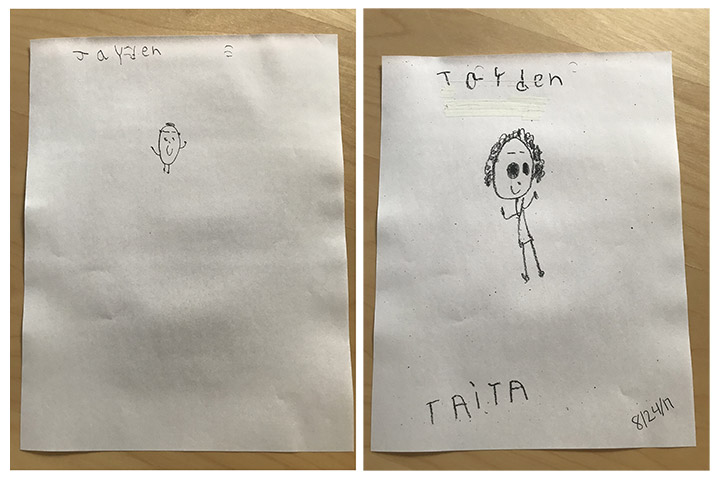
Vision & Learning
Vision and Behavior
Common Symptoms



80% of what we learn is processed through our vision. Therefore, effective visual skills are critical to the learning process. Studies show that deficiencies in binocular vision, accommodation, oculomotor control, and/or visual information processing can lead to a significant handicap in the ability to learn.
Deficits with visual motor, or eye-hand coordination, typically cause distorted or illegible handwriting, difficulty completing written assignments, and misalignment of digits in columns. Frustration with paper pencil activities is often associated with visual motor integration issues.
 Before After
Before AfterAt Excel Institute, we correct vision dysfunctions that lead to poor reading and learning abilities. When our patients learn how to control their visual system with more efficiency, they improve in reading, writing, and overall learning abilities, enabling students to thrive in the classroom.
Vision is the dominant sensory system of the brain. Even with 20/20 visual acuity, an individual may still suffer from a vision condition, making it difficult to learn. When a child is struggling to learn, frustrations during homework may surface as well as poor attention or concentration in the classroom.
Since these types of behaviors are commonly linked with ADD/ADHD, children may be misdiagnosed with this behavioral condition rather than having their visual system investigated.
A child with an autism spectrum disorder, cerebral palsy, pervasive developmental disorder (PDD), or other behavioral condition may prevent their vision skills from developing normally. At Excel Institute, we treat these behaviors in order to improve their vision and sensory integration. As a result, our patients’ experience an increase in their learning skills, their abilities to perform day-to-day tasks, and they respond more effectively during other rehabilitative services.
Treatment
Using the principles of neuroscience, Excel Institute treats these vision conditions at the source. We use state-of-the-art technology, which not only yields great success in our patients, it also makes therapy fun! With our therapy, we ensure real and lasting results for our patients who suffer from poor attention and concentration symptoms. Our treatments for these various behaviors include
Concentration problems resulting from an accommodative dysfunction, a vision condition that makes eye focusing difficult.
Headaches, double vision, and/or eyestrain may cause frustration during reading/homework actives as a result of a condition known as convergence insufficiency (CI). CI is an eye teaming condition which causes the eyes to drift outward when reading or during other up-close tasks.
If one is slow at reading or unable to keep their place on a page, they may have an oculomotor dysfunction, which is a deficiency in fixation, saccadic eye movement, and/or tracking eye movement.
If one cannot make sense of visually presented information, they may have a visual processing disorder.
When these types of symptoms are present, it is not surprising one is unable to maintain attention and concentration, is easily distracted, and can be disruptive to others.
If your child is experiencing one or more of these symptoms, click here or contact the Excel Institute at 231-946-7700 and schedule a Vision Therapy exam today!
Excel Vision Institute
328 Munson Ave.
Suite B
Traverse City, MI 49686
Get Directions
Phone: (231) 946-7700
Fax: (231) 497-1521